
23 minute read
CLEARSPAN Pre-Engineered Steel Building
In any industry, circumstances can arise that require businesses to find a quick building solution. This can be a stressful situation, as operations often have to scramble and rapidly gauge their options to find the right structure.
For an immediate answer, businesses frequently turn to pre-engineered structures over conventional buildings. While this can be a quick and convenient option, operations will also want to ensure they’re getting a high-quality building that can stand the test of time.
That’s where ClearSpan comes in. ClearSpan’s pre-engineered steel buildings provide operations with a structure that’s not simply just a quick fix, but that also can be a reliable long-term solution, the company said.
When businesses work with ClearSpan, they benefit from quick construction timelines and industry-leading warranties. Their building will provide a number of unique benefits, ensuring they get an immediate solution that’s easy to maintain and continues to meet the operation’s needs, well into the future, ClearSpan said. What Are
Pre-Engineered Buildings?
If a building has been pre-engineered, it means the structure has already gone through the design and engineering process. The building components are manufactured to create specific dimensions and provide optimal strength. Operations can then choose between different building sizes, according to their requirements.
When businesses need a building immediately, these structures offer a convenient and reliable solution. ClearSpan’s pre-engineered steel buildings are manufactured with ultimate durability and include blueprints that certify their strength against various snow and wind loads. This allows them to withstand the harshest environments and meet just about any building codes, so every business is guaranteed a durable and longlasting structure.
Pre-engineered steel buildings utilize modular construction, so that they can be more adaptable. Although these structures are available in pre-determined sizes, modular construction allows them to be easily expanded upon in the future, if a business desires.
The ultimate goal of pre-engineered steel buildings is to provide a structural solution to nearly any industry. They are extremely adaptable and durable, and their design gives them the versatility to serve any operation’s purpose. From the military, to athletics, to the most demanding storage applications, ClearSpan’s pre-engineered steel buildings offer a superior, cost-effective solution.
Why Should I Choose Pre-Engineered Steel Buildings?
Pre-engineered steel buildings combine durability with convenience and are constructed from high-quality building material that allows them to satisfy most building codes. They have already been engineered, so the design process is essentially eliminated in these structures and the entire purchasing process is streamlined. Pre-engineered steel buildings can be shipped quickly and assembled in very little time, leading to more cost-effective construction.
When operations obtain a pre-engineered structure, they have a choice between several foundation options. Helical anchors are one of the most notable because they make engineered steel buildings more convenient and adaptable.
This foundation allows pre-engineered steel buildings to be considered 100 percent temporary, while still providing the strength and reliability of a traditional foundation. Helical anchors are drilled directly into the ground and require minimal excavation, which limits their impact on the surrounding environment, and allows for simpler installation or removal.
How Operations Can Benefit
From ClearSpan
Pre-Engineered Structure
By working with ClearSpan, businesses will get an immediate solution that can accommodate their needs, no matter what the building’s intended purpose may be. ClearSpan provides a number of metal cladded pre engineered building options. These are built with ultra sturdy I-beam frames, and they can be built to any size. ClearSpan also offers a number of pre engineered structures that can be cladded with fabric.
The fabric buildings feature a truss frame design that creates wide-open interiors with no support posts. This ensures operations get abundant space, without any obstructions to hinder potential work or production. The frame also creates naturally high clearances, allowing even the tallest vehicles or machinery to maneuver in and out of the pre-engineered steel buildings comfortably.
The cladding is naturally translucent, so it allows sunlight to filter through and flood the structure’s interior. This produces lighting that’s easy on the eyes, and operations can save on utility costs because they don’t have to run artificial lighting throughout the day.
The cover also is climate-sensitive, which allows the interior to be 10 degrees cooler in the summer and 10 degrees warmer in the winter. This helps pre-engineered steel buildings stay comfortable, even during extreme summer temperatures, or cold winter days.
While pre-engineered steel buildings come “as is”, ClearSpan offers a one-stopshop for all the accessories a business may need to acquire. Whether it’s doors, lighting, HVAC equipment or any other steel building systems, they can be seamlessly integrated into pre-engineered steel buildings.
If businesses want a structure that can be customized to meet all of their exact needs, ClearSpan’s extensive line of buildings can provide the answer they’re looking for.
With ClearSpan, finding the right type of building doesn’t have to be a hassle for businesses. ClearSpan’s pre-engineered steel buildings are designed to meet a variety of applications across a number of industries, ensuring any operation can get their ideal structure, even when they face time constraints.
For more information, visit clearspan.com.
ClearSpan’s pre-engineered steel buildings are manufactured with ultimate durability and include blueprints that certify their strength against various snow and wind loads.
Helical anchors are drilled directly into the ground and require minimal excavation, which limits its impact on the surrounding environment, and allows for simpler installation or removal.
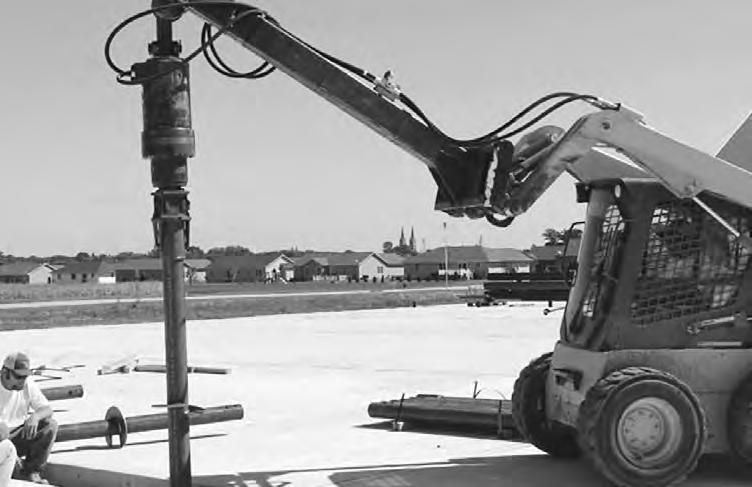

Abele Tractor & Equipment Co., Inc. www.abeletractor.com Albany, NY 12205 518/438-4444
Ahearn Equipment Inc. www.ahearnequipment.com Spencer, MA 01562 877/624-3276
Cherry Valley Tractor www.cherryvalleytractor.com Marlton, NJ 08053 856/983-0111
Erb & Henry Equip., Inc.
www.erbhenry.com New Berlinville, PA 19545
610/367-2169 ADMAR Construction Equipment & Supplies
www.admarsupply.com Vestal, NY 13850
607/798-0333
Tonawanda, NY 14217
716/873-8000
Canandaigua, NY 14424
585/396-0031
Rochester, NY 14623
585/272-9390
Cicero, NY 13039
315/433-5000 Eagle Power & Equipment Company
www.eaglepowerandequipment.com West Chester, PA 19380
610/458-7054
Doylestown, PA 18901
215/348-9041 F&W Equipment
www.fwequip.com Orange, CT 06477
203/795-0591 Reading Tractor and Equipment
www.readingtractor.com 5538 Pottsville Pike Leesport, PA 19533
610/926-2441
Marshall Machinery, Inc. www.marshall-machinery.com Honesdale, PA 18431 570/729-7117 Johnson City, NY 13790 607/729-6161 Middletown, NY 10940 845/343-6683 South Abington Township, PA 18411 570/489-3642 Tannersville, PA 18372 570/895-4884

Westchester Tractor Inc. www.wtractor.com Brewster, NY 10509 845/278-7766
Chappell Tractor www.chappelltractor.com 454 Route 13 South Milford, NH 03055 603/673-2640 ABLE Equipment Rental www.ableequipment.com Deer Park, NY 11729 866/468-2666 631/841-3333
Highway Equipment Company www.highway-equipment.com Millstone Township, NJ 08535 732/446-7600












YEXCLUSIVEINDUSTR TIC TAUTOMA TRACKTENSIONINGSYSTEM












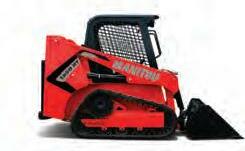

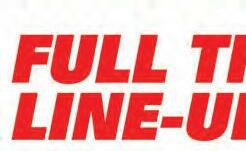

Quality Fleet Service, Inc.
qualityfleetservice.com 548 New Ludlow Road • South Hadley, MA 01075 413-213-0632



Trimble announced horizontal steering control functionality on the Earthworks Grade Control Platform for soil compactors, an automatic steering control solution for soil compactors — and the next step towards Trimble’s autonomous vision.
Horizontal steering control helps operators achieve higher quality surfaces and consistent compaction. Compatibility with all soil compactor makes and models enables contractors with mixed fleets to achieve a faster return on investment.
Trimble Earthwork’s horizontal steering control automatically steers a soil compactor using a 3D model or compaction pass line. This helps to improve compaction productivity and quality for operators of all skill levels by precisely controlling overlap between passes.
Auto steering helps reduce operator fatigue while also minimizing over- and under-compaction, providing a more consistent sub surface for a higher quality, longer lasting finished product, according to the manufacturer.
Trimble Automatic
Steering Technology
Trimble Earthworks uses the NavController III steering technology from the Trimble agriculture division, leveraging the company’s 20 years of steering technology and applying it to civil construction applications. In 2020, Trimble also introduced horizontal steering control as part of the Trimble Earthworks Grade Control Platform for dozers.
Horizontal steering control for dozers automatically controls the machine to follow any horizontal alignment such as the back of a curb, breakline, roadway centerline or bottom of slope without operator assistance.
Trimble Earthwork’s horizontal steering control automatically steers a soil compactor using
a 3D model or compaction pass line. This helps to improve compaction productivity and Availability quality for operators of all skill levels by precisely controlling overlap between passes. Trimble Earthworks Grade Control Platform for soil compactors with horizontal steering control is available now globally through the worldwide SITECH distribution channel. For more information, visit heavyindustry.trimble.com/earthworks.
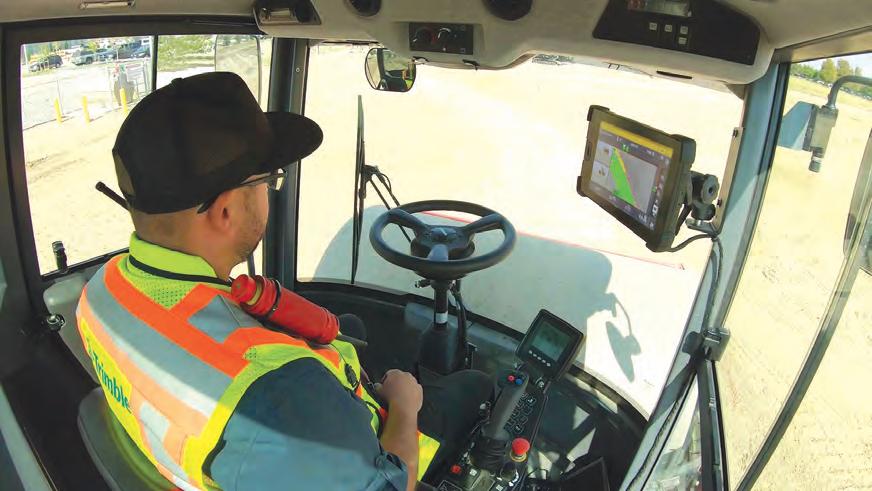
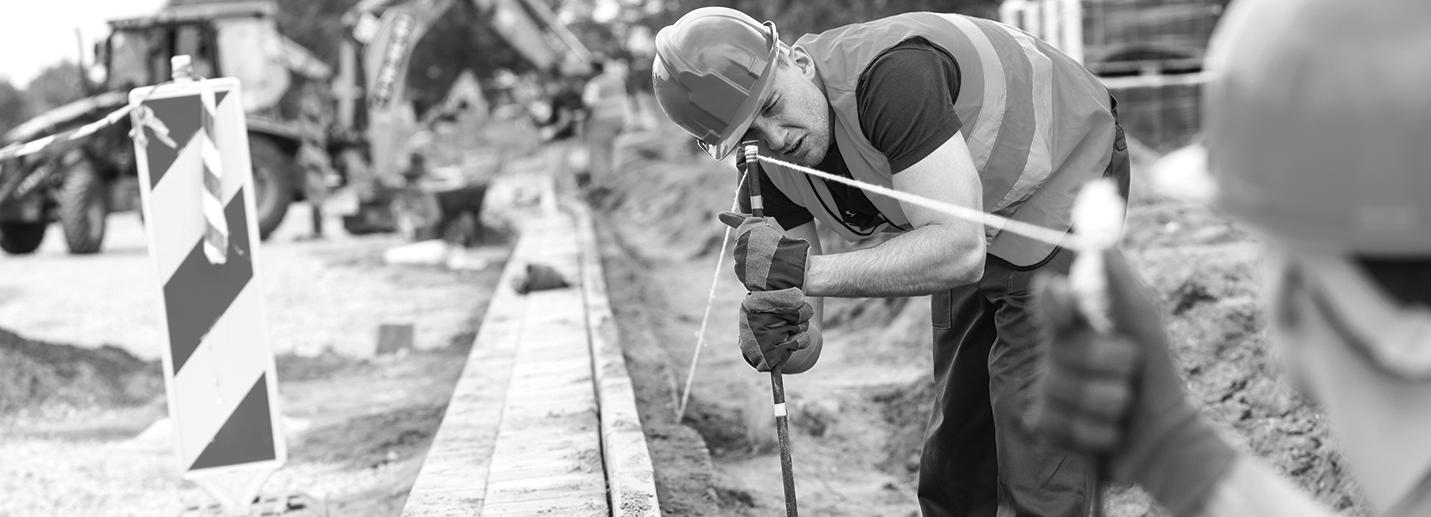
Frequent site inspections, regular safety meetings and rigorously enforced site safety standards supplemented with real-time data collection systems are suggested.
SAFETY from page 30
Wiring by its very nature creates a high risk of trip and fall injuries stemming from entanglements in loosely or otherwise improperly stored materials, he said.
Flammable materials pose an inherent danger on the construction site. Solvents, liquid petroleum gas and adhesives pose multiple risks ranging from flammability and combustion to inhalation dangers, said Flynn.
Such materials must be stored and used in adequately ventilated spaces, he continued.
Simple skin contact with these materials can cause injury, said Flynn. They’re often more dangerous when inhaled due to the lack of or failure to use proper respiratory protection.
Foot injuries are a very common occurrence on construction sites, especially from falling objects. But there are many other causes and types of injuries.
Rhoades Legal notes that in addition to electrical shock, workers can suffer broken bones, punctures, cuts and lacerations, burns and sprains all involving the feet and negligence.
The law firm noted that workers can be crushed or suffer broken foot bones due to falling objects, moving vehicles and being trapped or caught between objects.
Punctures of the sole of the foot are caused by loose nails, sharp metal or glass objects.
“Puncture wounds can easily get infected if not treated promptly. You can even get tetanus from a puncture injury,” according to the legal team.
Cuts and lacerations of the feet can be caused by chainsaws, rotary mowers and unguarded or improperly guarded heavy machinery.
Foot-related burn injuries can result from splashing molten metal, chemical spills, contact with fire and flammable or explosive materials.
Electrical shock is caused by static electricity, contact with sources of electricity, including exposed hot wiring or wiring that is not properly grounded.
Finally, sprains can happen in slip and fall accidents. A worker could slip and fall on scaffolding or from wearing improper footwear.
Maintaining Safe Work Sites
Many local jurisdictions provide legal means to compensate injured workers, but both site owner and contractor can be proactive by integrating a mix of strictly enforced site safety practices, OSHA regulations and simple common sense, said Flynn.
“Comprised of wireless onsite sensors coupled with data collection nodes, such systems streamline the structural engineer’s ability to monitor the entire building site and anticipate problems before they arise,” said Flynn. “These systems can be customized to monitor material storage and the location and movement of workers throughout the site, thereby giving the engineer the ability to anticipate and prevent dangerous or even deadly accidents before they happen.”
What simple common-sense measures can be implemented on the job site? The list is long, but Rhoades refers to OSHA’s rules for preventing workplace injuries: • Workers must wear safety shoes when working in locations where there is a risk of slipping and falling or objects piercing the sole. • Protective footwear must meet ANSI Z4 or have equivalent design requirements. Impact and compression protection are provided by all ANSI-approved shoes.
Shoes or boots may need to have special electrical conductivity insulation or other non-conductive protective material in order to prevent electrical shock.
Chemical-resistant boots may be required to protect against caustic, reactive, toxic or corrosive substances during cleaning or surface preparation.
Slip-resistant shoes should always be worn in any type of construction or production facility environment, but especially if the worker will have to be in icy or rainy weather conditions.
Many construction work settings require boots with toe caps and puncture-proof soles. Non-slip soles, chemical-resistant materials, insulation or other protective features may be required in your profession.
Grant Law Office noted the adoption of additional safety precautions to reduce the risk of injury specifically from falling objects on the construction site: • Always wear protective gear, such as helmets, goggles and hard-toe boots. Avoid hazardous areas for falling materials. • Never walk or stand under heavy equipment, such as a front loader, hoist or crane, particularly when it is carrying a load. • Use the proper equipment for the job at hand. Never stack materials or objects too high. And inspect equipment and tools before using them. • Never use improperly maintained or faulty equipment or tools; never exceed the lifting capacity of a hoist, crane or lift; and secure tools and equipment properly when working overhead. CEG
CLEMENTE from page 1
According to Stephen G. Shanley, director, Department of Public Works, the project includes repairs to the structural steel, repairs to the concrete/masonry substructure, replacement of the concrete deck and sidewalks, replacement of the expansion dams, refurbishment of the pylons, and repairs to the stairs on the downtown side.
In addition, the contract includes improvements to drainage, repainting of the bridge and handrails Aztec Gold, replacement of the navigational lighting, replacement of the street lighting to resemble its original appearance from the 1920s, replacement of the electric and gas utility lines under the bridge, and replacement of the delineator posts used to separate the bicycle lanes from the vehicle lanes.
Other work, including the cleaning of the exposed masonry surfaces on the Roberto Clemente, Andy Warhol and Rachel Carson Bridges, will be done along with placement of rock scour protection around the Roberto Clemente Bridge and Rachel Carson Bridge piers in the Allegheny River. The handrails on the bridge side of Fort Duquesne Boulevard also will be repainted Aztec Gold.
“We are required to maintain a 39-foot clearance for Allegheny River traffic within the 180-foot navigation channel beneath the bridge’s midspan,” said Brent Wasko, public information officer of the Allegheny County Department of Public Works.
“During construction, we will be installing and using an underdeck platform that can sag with heavy loads, and river water levels change. So, river navigation coordination with the U.S. Coast Guard and Waterways Association of Pittsburgh as well as maintaining marine radio contact is crucial to the safety of our contractors’ workers and those on passing river vessels.”
Another challenging aspect noted is the fact that the Roberto Clemente Bridge is near PNC Park, Heinz Field and downtown entertainment venues.
“So, we will need to coordinate traffic during many special events, especially during Pittsburgh Pirates games,” Wasko said.
During the project, coordination also is required with local utility companies as they remove their old lines and install new ones.
“During the construction, we will need to install temporary bridge tie-downs at Piers 2 and 4 to resist uplift at the existing bearings with enough anchorage capacity to replace the existing eye-bar anchorage system,” Wasko said.
He reported that the Roberto Clemente Bridge design is rarely used today. In fact, it is one of just five self-anchored suspension bridges still in use in the United States.
Wasko explained that the existing bearings consist of two eye-bars embedded through the concrete and stone
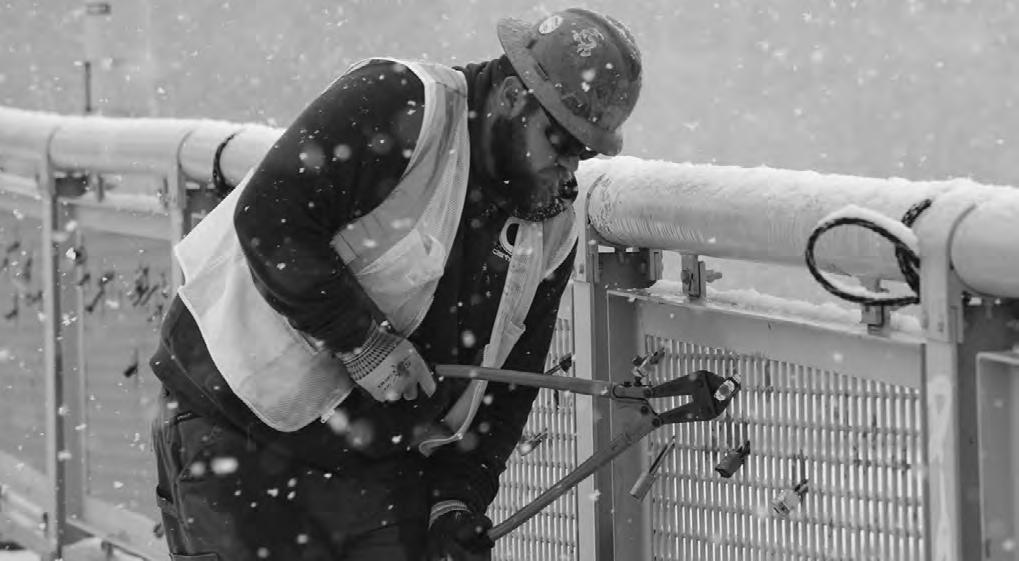
Allegheny County Department of Public Works photo
The project includes repairs to the structural steel; repairs to the concrete/masonry substructure; replacement of the concrete deck and sidewalks; replacement of the expansion dams; refurbishment of the pylons; and repairs to the stairs on the downtown side.
Allegheny County Department of Public Works photo
As part of preserving the historic appearance of the Roberto Clemente Bridge, more than 15,000 tension control bolts will be installed during this project to simulate the look of rivets.
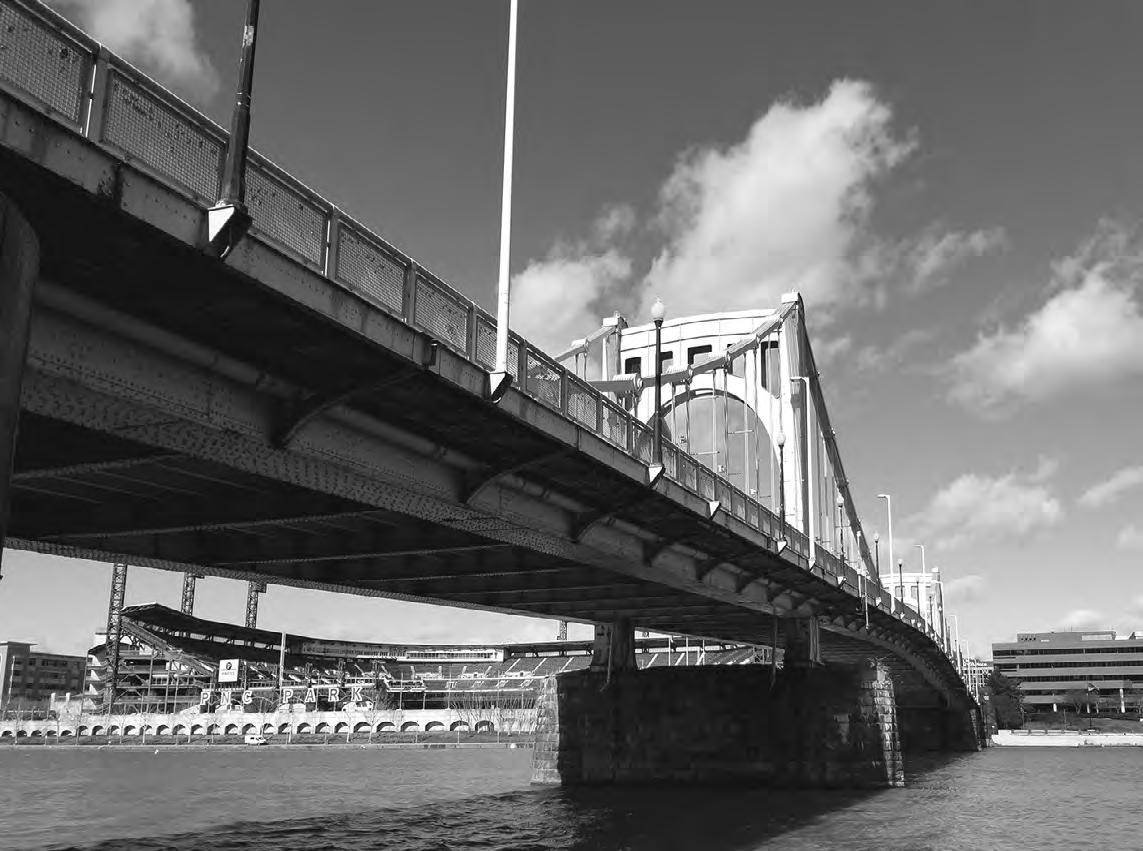
Allegheny County Department of Public Works photo
The Roberto Clemente (Sixth Street) Bridge in Pittsburgh, Pa., is undergoing a $34.4 million bridge rehabilitation project for the Department of Public Works.
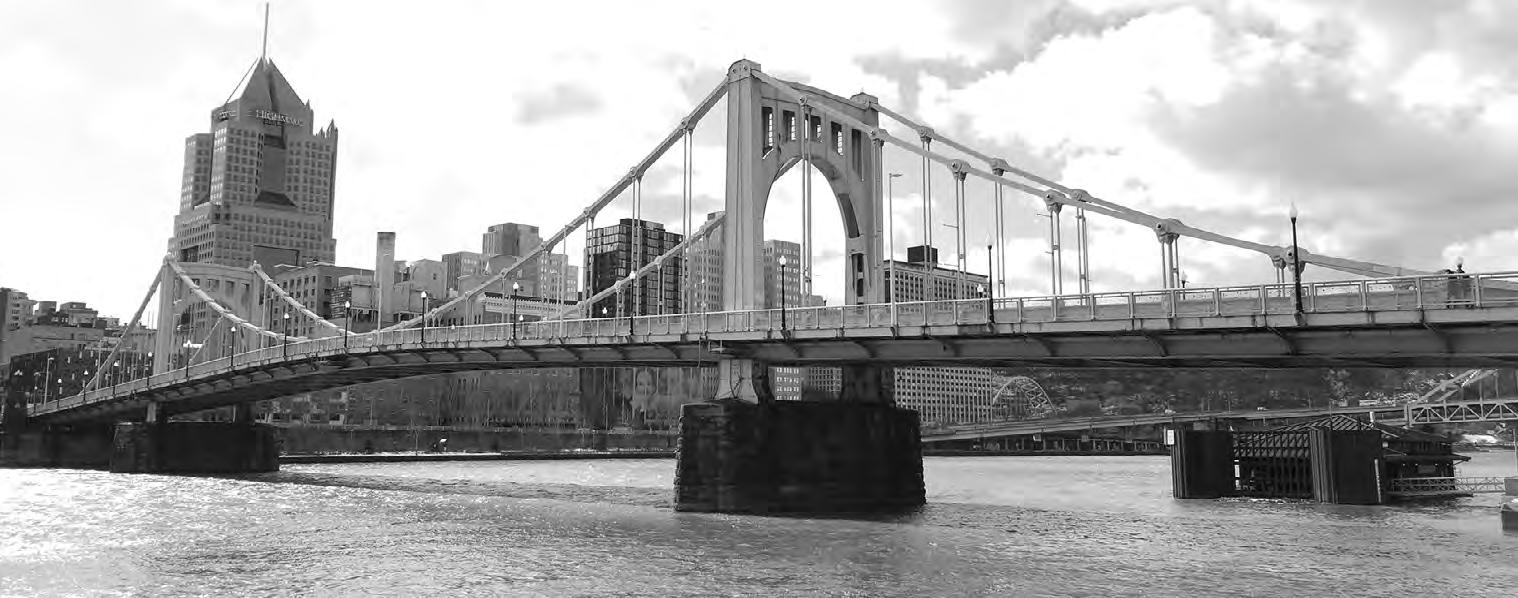
CLEMENTE from page 90
piers using the weight of the pier to help hold the end of the bridge down on both ends. Those embedded eye-bars are then pinned to an articulating arm connected to the ends of the stiffening girder. During this project, all four sets of bearings will be replaced with new bearing assemblies that will have drilled rock anchors to increase the tie-down capacity.
“The south tower of the bridge is on roller pins inside a grease box above the stone pier,” Wasko said. “The roller pins allow the tower to move as the bridge expands or contracts with temperature changes. During this project, the roller pins will be cleaned, a new grease box will be installed, and new grease will be added.”
According to Wasko, the bridge’s concrete deck is still functioning with an original, non-composite deck design resting on steel buckle plates.
“That outmoded concrete deck type has had cracking issues that have needed extensive repairs,” he said. “During this project, the deck will be with a new composite deck by adding shear studs and channel-type shear connectors across the stringers, increasing the deck’s overall flexural strength capacity.”
As part of preserving the historic appearance of the Roberto Clemente Bridge, Wasko said that more than 15,000 tension control bolts will be installed during this project to simulate the look of rivets.
He noted that the Roberto Clemente Bridge’s original primary contractor, American Bridge Company, came up with the pioneering approach to construct the bridge without using falsework in the river. They converted the eye-bar chain and girder system into a truss by adding temporary diagonal members to cantilever the bridge over the river on both sides, allowing construction toward the midspan.
One unusual aspect of the project was the removal of approximately 11,000 locks that had been placed on the bridge over time by citizens. They were donated to the Industrial Arts Workshop of Hazelwood, a nonprofit organization that teaches students of all ages about sculpture creation and artistic literacy, including the fundamentals of welding, design, engineering principles, and safety standards. The school also promotes collaboration and teamwork, career readiness, as well as community service and engagement.
“The Clemente Bridge is an iconic symbol of Pittsburgh, and one that visitors and residents alike are familiar, but it too needs some love,” said County Executive Rich Fitzgerald. “This significant infrastructure investment will complete the rehabilitation of the third Sister Bridge and also allows the opportunity for a unique, sustainable reuse of the many locks that have been added to the bridge over the years.”
It will be up to Industrial Arts Workshop Executive Director Tim Kaulen to determine what will be created using the locks and where the art will be displayed.
“I am excited for the opportunity to receive the locks, which are individual expressions from so many people who placed their thoughts and wishes in public,” said Kaulen when the project began. “It doesn’t take much imagination to visualize the web of connections between these locks and the journeys they took to reach such a special place in our community. I look forward to using the locks in a future public artwork that pays tribute to their origins and what brought them together on the Roberto Clemente Bridge.”
Residents and visitors who placed locks on the Roberto Clemente Bridge were encouraged to remove them before the start of construction. The locks that remained after construction began were cut off of the bridge’s handrails.
The current railings on Roberto Clemente Bridge were installed in 2000 and are still in good condition. Plans were made for them to be removed, repainted and reinstalled as part of the project. When the railings need to be replaced during a future project, Public Works plans to explore designs that discourage both graffiti and lock placement.
Public Works requests that residents and visitors stop placing locks on the Roberto Clemente Bridge and other county-owned bridges. The locks can damage bridge railings, add extra weight to the railings than they were designed to hold, and are expensive and time-consuming to remove in bulk.
According to Shanley, this is the third Sister Bridges rehabilitation project. It follows the $25.4 million Andy Warhol Bridge rehabilitation project in 2016-17 and the $23.3 million Rachel Carson Bridge rehabilitation project in 2019-20.
Major subcontractors include Geronimo Painting Company for bridge painting, Amelie Construction for steel repairs, Thoroughbred Construction for electrical, and Steel Core Construction for deck rebar installation.
Major equipment used includes a 45,000 cfm dust collector, recycling units, a rapid deployment containment trailer, Snooper trucks, 920 ft. of cable-supported underdeck, hydraulic excavators with a slab crab bucket and hoe ram, tri-axle loaders, a Bidwell 3600 bridge paver, a deck crane, a telescopic handler and a barge and push boat.
The Roberto Clemente Bridge opened in 1928. It carries 7,895 vehicles daily across the Allegheny River. The Sister Bridges are the only trio of identical bridges in the world and the first self-anchored suspension bridges in the United States.
Shanley reported that the bridge was last inspected in 2021. The deck, superstructure, and substructure are all rated 5, or in “fair” condition. The report states that the bridge’s “… primary structural elements are sound …” CEG
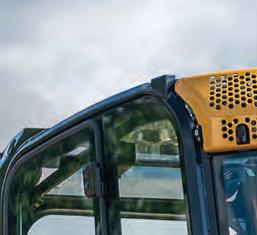


TRIED & TRUE REP OF NAR RM EC




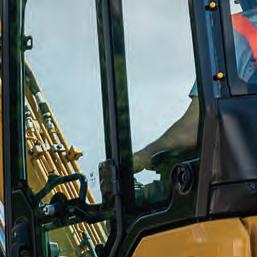
0% FOR 60 MONTHS


WITH$0 *0DOWNWITH $0 0 DOWN
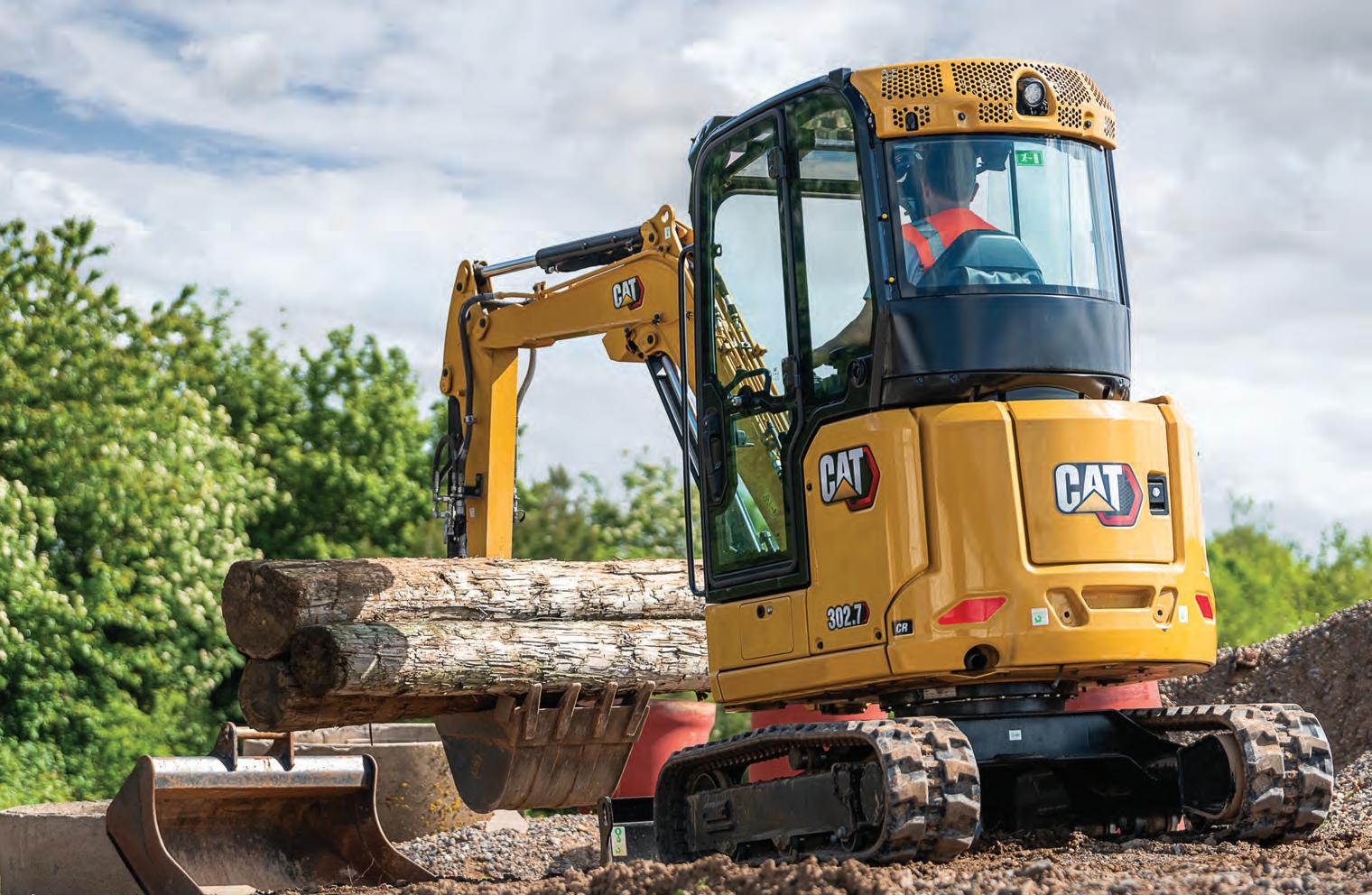
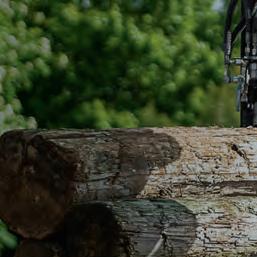

Mini Excavators rackCompact T Loaders Compact Wheel Loaders Skid Steer Loaders
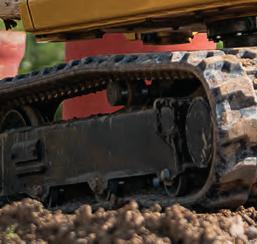
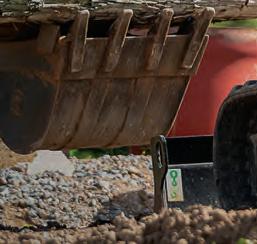

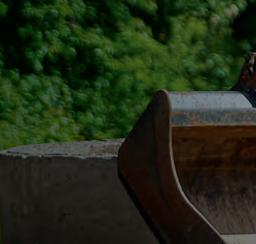
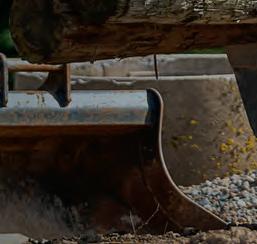
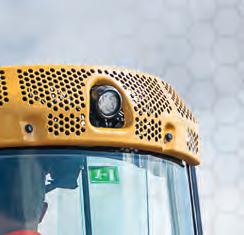

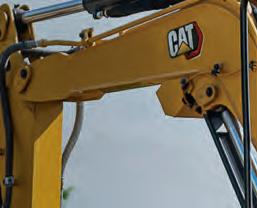
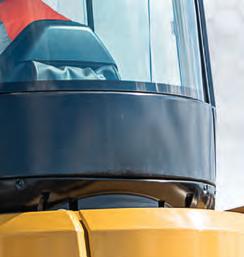

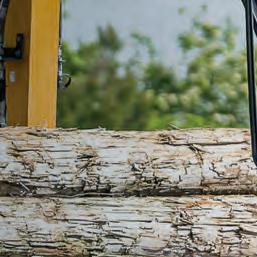
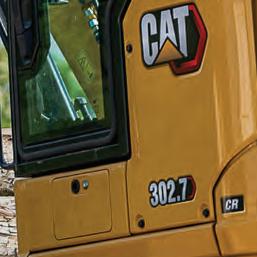
Low interest rate A + First-in-claes + Cat CV ss service and support = The right time to call your North .heast Cat Dealer Learn more at NECatDealers.com/finance
Unlike the qualit ty and dependability of Cat® equipment, this offer w connect with your Northeast Region Cat D Dealer for huge savings a Good things comme to those who wait. act now.
on’t last a lifetime. It’s hig and an unbeatable Protect
h time you ion Package.
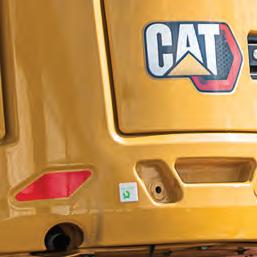

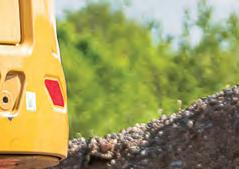

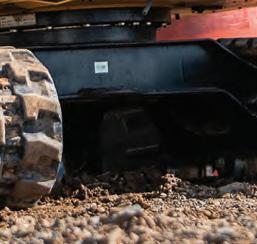
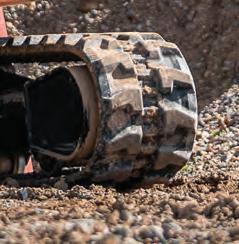
SINCE1948 SINCE 1948
Cleveland Brothers
www.clevelandbrother rs.com
d Serving Pennsylvania and northern West Virginia 844-720-4CAT
SINCE1957 SINCE 1957
Foley, Incorporated
www.foleyinc.com
Serving New Jersey, ea Pennsylvania, northern Delaware and Staten Is stern sland
732-885-5555
Since 1923
SINCE19223SINCE 192
H.O. Penn Machinery
www.hopenn.com
Serving Connecticut southern New York and
844-CAAT T-1923
SINCE19660SINCE 19660
Milton CAAT T
www.miltoncat.com
Serving Massachusetts, Maine, New Hampshire, Vermont, Rhode Island, and Upstate New York 888-347-3449
MIL M TON ON CT CANCL N C
TOTMIL AON C CML ONC ON
H.O. P HOOPH H.OO. PPENN ENP PENNN T TH RS STHE THERS HERS HEERS ECLEVLEVELAND ELEVELE BRO O CLE ANDELA ELAND , , , INC.FOLEY EY NCFO FOLELEY,INC , INCNC.OLE
N 3CO V








